-
*Astrella.
User deleted
Kyaiktiyo Pagoda - Golden Rock
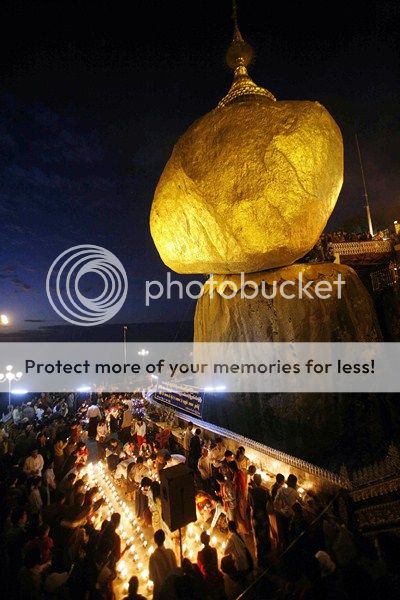
Kyaiktiyo Pagoda also known as Golden Rock is a well-known Buddhist pilgrimage site in Mon State, Myanmar. It is a small pagoda (7.3 metres (24 ft)) built on the top of a granite boulder covered with gold leaves pasted on by devotees.
According to legend, the Golden Rock itself is precariously perched on a strand of the Buddha's hair. The rock seems to defy gravity, as it perpetually appears to be on the verge of rolling down the hill. The rock and the pagoda are at the top of Mt. Kyaiktiyo. It is the third most important Buddhist pilgrimage site in Burma after the Shwedagon Pagoda and the Mahamuni Pagoda. A glimpse of the "gravity defying" Golden Rock is believed to be enough of an inspiration for any person to turn to Buddhism.
In the Mon language, the word 'kyaik' means "pagoda" and 'yo' means "to carry on the hermit's head". The word 'ithi' in Mon from Pali risi means "hermit". Thus, 'Kyaik-htiyo' means "pagoda upon a hermit's head"
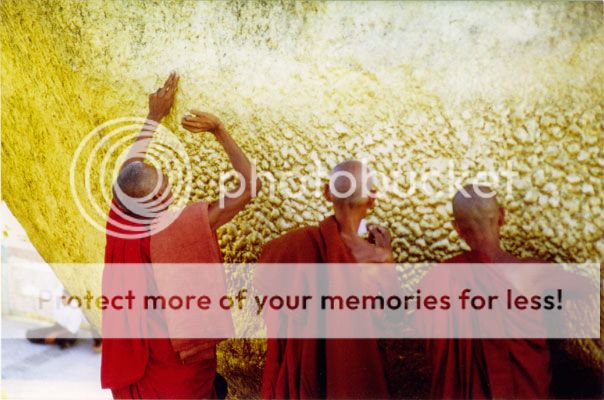
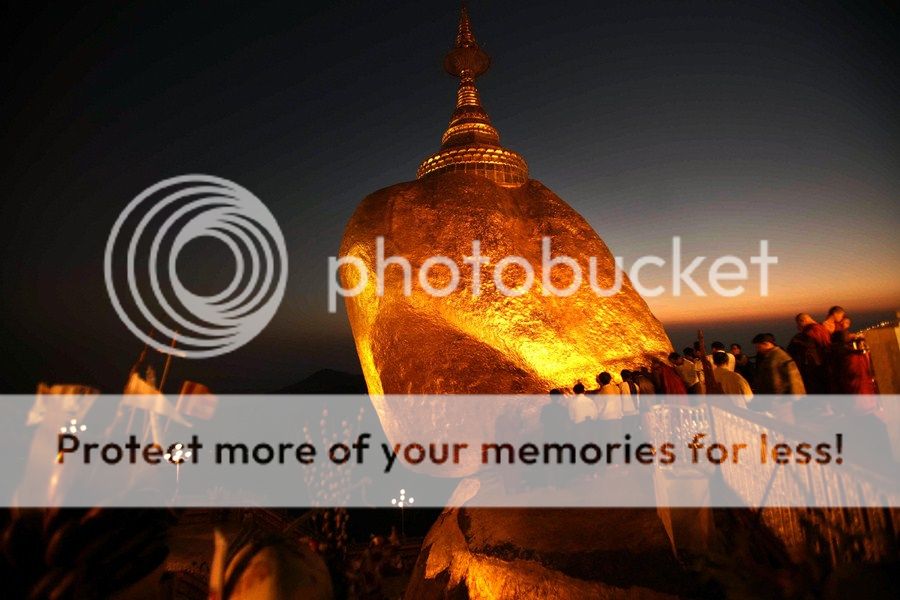
History
The first written evidence of the Kumbha Mela can be found in the accounts of Chinese monk Xuanzang (玄奘, alternately Hsuan Tsang) who visited India in 629–645 CE, during the reign of King Harshavardhana. However, similar observances date back many centuries, where the river festivals first started getting organised. According to medieval Hindu theology, its origin is found in one of the most popular medieval puranas, the Bhagavata Purana. The Samudra manthan episode (Churning of the ocean of milk), is mentioned in the Bhagavata Purana, Vishnu Purana, the Mahabharata, and the Ramayana.
The account goes that the Devas had lost their strength by the curse of Durväsä Muni, and to regain it, they approached Lord Brahma and Lord Shivam. They directed all the demigods to Lord Vishnu[8] (full story on kumbh mela) and after praying to Lord Vishnu, he instructed them to churn the ocean of milk Ksheera Sagara (primordial ocean of milk) to receive amrita (the nectar of immortality). This required them to make a temporary agreement with their arch enemies, the Asuras, to work together with a promise of sharing the wealth equally thereafter. However, when the Kumbha (urn) containing the amrita appeared, a fight ensued.
For twelve days and twelve nights (equivalent to twelve human years) the Devas and Asuras fought in the sky for the pot of amrita. It is believed that during the battle, Lord Vishnu (incarnated as Mohini-Mürti) flew away with the Kumbha of elixir spilling drops of amrita at four places: Allahabad (Prayag), Haridwar, Ujjain and Nashik.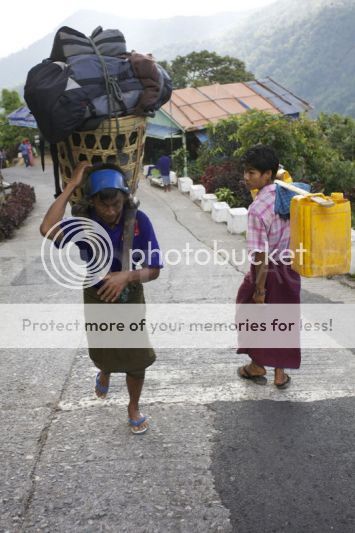
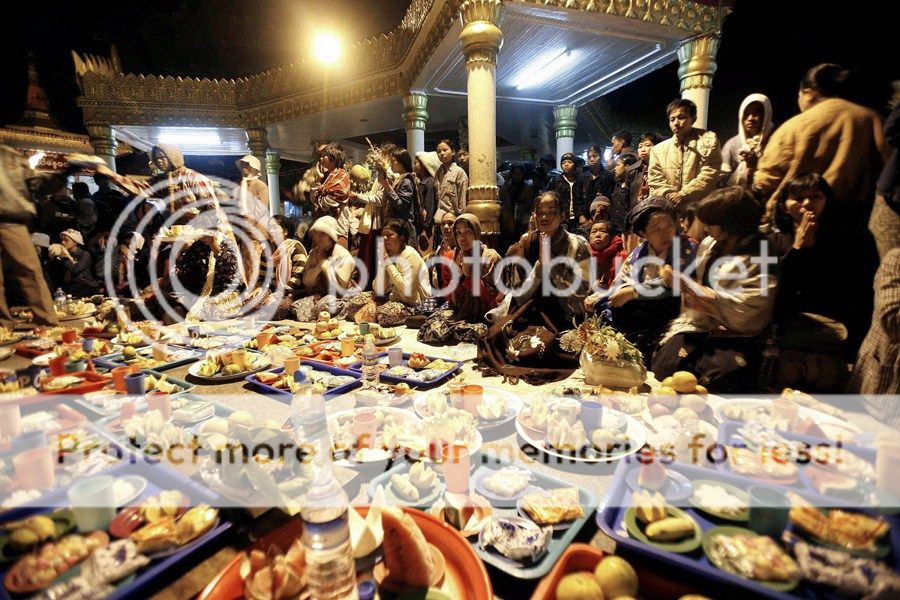
Legend
The legend associated with the pagoda is that the Buddha, on one of his many visits, gave a strand of his hair to Taik Tha, a hermit. The Hermit, who had tucked it in the tuft of his hair safely, in turn gave the strand to the King, with the wish that the hair be enshrined in a boulder shaped like the hermit's head. The King, had inherited super natural powers from his father who was well known as Zawgyi (a proficient alchemist) and the mother was a naga (serpent dragon) princess.
They had found the rock at the bottom of the sea. With the help of the Thagyamin, the king of Tawadeintha Heaven in Buddhist cosmology, found the perfect place at Kyaiktiyo for locating the golden rock and build a pagoda, where the strand was enshrined. It is this strand of hair that, according to the legend, prevents the rock from tumbling down the hill. The boat, which was used to transport the rock, turned into a stone. This also is now worshipped by pilgrims at a location about 300 metres (980 ft) from the golden rock. It is known as the Kyaukthanban Pagoda or stupa (literal meaning: stone boat stupa).
Legend also mentions that pilgrims undertaking the pilgrimage by trekking from the Kinpun base camp, three times consecutively in a year will be blessed with wealth and recognition.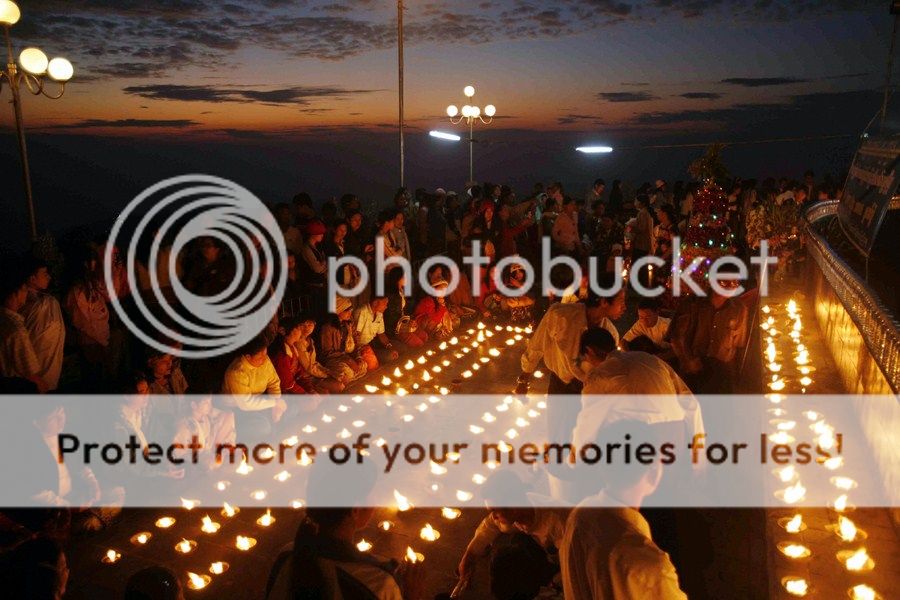
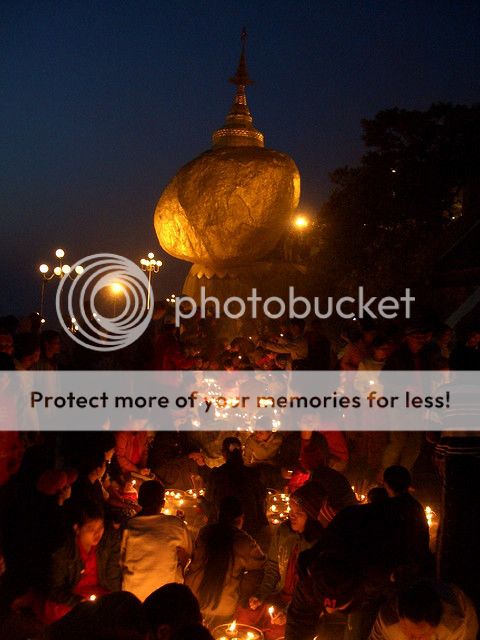

Pilgrimage
Kyaiktiyo Pagoda or Golden Rock has become a popular pilgrimage and also tourist attraction. At the peak of the pilgrimage season, during November to March, an atmosphere of devotion is witnessed at Kyaikhtiyo pagoda. As the golden rock gleams in different shades from dawn to dusk (the sight at dawn and at sunset are unique), pilgrims' chants reverberate in the precincts of the shrine. Lighting of candles, meditation and offerings to the Buddha continues throughout the night.
Men cross over a bridge across an abyss to affix golden leaves (square in shape) on the face of the Golden Rock, in deep veneration. However, women are not allowed to touch the rock. Pilgrims visit the pagoda, from all regions of Myanmar; a few foreign tourists also visit the pagoda. Even disabled persons who are staunch devotees of Buddha visit the pagoda, walking up the track on crutches. Old people, who can not climb, are carried on stretchers by porters to the Pagoda to offer prayers to Buddha.
The Full Moon day of Tabaung in March, is a special occasion for pilgrims who visit the shrine. On this day, the platform of the pagoda is lighted with ninety thousand candles as reverential offering to the Lord Buddha. The devotees visiting the pagoda also offer fruits, food and incense to the Buddha.
Source: http://en.wikipedia.org/wiki/Kyaiktiyo_Pagoda.
Kyaiktiyo Pagoda - Golden Rock29 Maggio 2013 |


